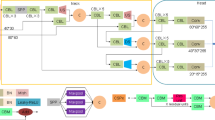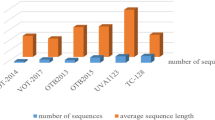Abstract
Visual background extraction is a method for detecting moving objects in video sequence images. In the traditional visual background extraction algorithm, ghost phenomena and dynamic background interference exist in the detection results. In order to speed up ghost removal and suppress the interference of dynamic background, an improved visual background extraction algorithm is proposed. In this method, secondary judgment is added to eliminate ghost pixel interference in the process of spatial transmission of pixels, and the flicker degree of pixels is analyzed to suppress the interference of dynamic background pixels. In order to improve the detection effect, the edge of moving object is obtained by edge detection method, then filled and fused with the detected object. Finally, the detection of moving object is optimized by means of median filtering and mathematical morphology. The simulation results show that the improved algorithm accelerate ghost removal, effectively suppresses the noise interference caused by dynamic background, and improves the accuracy of moving object detection.













Similar content being viewed by others
References
Aranda LA, Reviriego P, Maestro JA (2017) Error detection technique for a median filter. IEEE Trans Nucl Sci 64:2219–2226
Barnich O, Van Droogenbroeck M (2009) ViBE: A powerful random technique to estimate the background in video sequences. 2009 IEEE International Conference on Acoustics, Speech and Signal Processing. IEEE, pp 945–948
Barnich O, Van Droogenbroeck M (2011) ViBe: a universal background subtraction algorithm for video sequences. IEEE Transactions on Image Processing 20:1709–1724
Cao J, Pang Y, Li X (2016) Pedestrian detection inspired by appearance Constancy and Shape symmetry. IEEE Trans Image Process 25:5538–5551
Cao X, Yang L, Guo X (2017) Total variation regularized RPCA for irregularly moving object detection under dynamic background. IEEE Transactions on Cybernetics 46:1014–1027
Chenglong C, Jiangqun N, Jiwu H (2013) Blind detection of median filtering in digital images: a difference domain based approach. IEEE Trans Image Process 22:4699–4710
Choi J, Maurer M (2016) Local volumetric hybrid-map-based simultaneous localization and mapping with moving object tracking. IEEE Trans Intell Transp Syst 17:2440–2455
Devanne M, Berretti S, Pala P, Wannous H, Daoudi M, Bimbo AD (2017) Motion segment decomposition of RGB-D sequences for human behavior understanding. Pattern Recogn 61:222–233
Gao L, Li X, Song J, Shen H (2019) Hierarchical LSTMs with Adaptive attention for visual captioning. IEEE Trans Pattern Anal Mach Intell vol PP, pp 1–1
Gennarelli G, Vivone G, Braca P, Soldovieri F, Amin MG (2016) Comparative analysis of two approaches for multipath ghost suppression in radar imaging. IEEE Geoscience & Remote Sensing Letters 13:1226–1230
Han G, Wang J, Cai X (2014) Improved visual background extractor using an adaptive distance threshold. Journal of Electronic Imaging 23:1–12
Hu W, Yang Y, Zhang W, Yuan X (2016) Moving object detection using tensor-based low-rank and saliently fused-sparse decomposition. IEEE Trans Image Process 26:724–737
Huang SC, Do BH (2013) Radial basis function based neural network for motion detection in dynamic scenes. IEEE Transactions on Cybernetics 44:114–125
Jie H, Xu L, Xin H, Hong J, Meng W (2017) Abnormal driving detection based on normalized driving behavior. IEEE Trans Veh Technol 66:6645–6652
Ju J, Xing J (2019) Moving object detection based on smoothing three frame difference method fused with RPCA. Multimed Tools Appl 78:29937–29951
Kaushal M, Khehra BS (2017) BBBCO and fuzzy entropy based modified background subtraction algorithm for object detection in videos. Appl Intell 47:1–14
Khadidos A, Sanchez V, Li CT (2017) Weighted level set evolution based on local edge features for medical image segmentation. IEEE Trans Image Process 26:1979–1991
Koniar D, Hargas L, Loncova Z, Simonova A, Duchon F, Beno P (2017) Visual system-based object tracking using image segmentation for biomedical applications. Electr Eng 99:1349–1366
Lu X, Xu C, Wang L, Teng L (2018) Improved background subtraction method for detecting moving objects based on GMM. IEEJ Trans Electr Electron Eng 13:1540–1550
Lv PY, Sun SL, Lin CQ, Liu GR (2018) Space moving target detection and tracking method in complex background. Infrared Phys Technol 91:107–118
Ou X, Yan P, Wei H, Yong KK, Zhang G, Xin P et al (2019) Adaptive GMM and BP neural network hybrid method for moving objects detection in complex scenes. International Journal of Pattern Recognition & Artificial Intelligence 33:1–16
Pang Y, Zhu H, Li X, Li X (2017) Classifying discriminative features for blur detection. IEEE Transactions on Cybernetics 46:2220–2227
Pang Y, Zhu H, Li X, Pan J (2016) Motion blur detection with an Indicator function for surveillance machines. IEEE Trans Ind Electron 63:5592–5601
Sobral A, Vacavant A (2014) A comprehensive review of background subtraction algorithms evaluated with synthetic and real videos. Computer Vision & Image Understanding 122:4–21
Song J, Guo Y, Gao L, Li X, Hanjalic A, Shen HT (2019) From deterministic to generative: multimodal stochastic RNNs for video captioning. IEEE Transactions on Neural Networks and Learning Systems 30:3047–3058
Su H, Wang J, Li Y, Hong X, Li P (2014) An algorithm for stitching images with different contrast and elimination of ghost. 2014 Seventh International Symposium on Computational Intelligence and Design, Hangzhou, pp 104–107
Varadarajan S, Miller P, Zhou H (2015) Region-based mixture of Gaussians modelling for foreground detection in dynamic scenes. Pattern Recogn 48:3488–3503
Wan M, Gu G, Cao E et al (2016) In-frame and inter-frame information based infrared moving small target detection under complex cloud backgrounds[J]. Infrared Phys Technol 77:455–467
Wang X, Gao L, Song J, Shen H (2017) Beyond frame-level CNN: saliency-aware 3-D CNN with LSTM for video a ction recognition. IEEE Signal Processing Letters 24:510–514
Wang Y, Jodoin P-M, Porikli F, Konrad J, Benezeth Y, Ishwar P (2014) CDnet 2014: an expanded change detection benchmark dataset[C]. IEEE Computer Society Conference on Computer Vision and Pattern Recognition Workshops
Wei H, Lei L, Chao Y, He L (2015) The moving target detection algorithm based on the improved visual background extraction. Infrared Phys Technol 71:518–525
Wu S, Chen D, Wang X (2017) Moving target detection based on improved three frame difference and visual background extractor. 2017 10th International Congress on Image and Signal Processing, BioMedical Engineering and Informatics (CISP-BMEI), Shanghai pp 1–5
Xin Y, Jie H, Dong L, Ding L (2014) A self-adaptive optical flow method for the moving object detection in the video sequences. Optik - International Journal for Light and Electron Optics 125:5690–5694
Yang Y, Han D, Ding J, Yang Y (2016) An improved visual background extraction for video moving object detection based on evidential reasoning. 2016 IEEE International Conference on Multisensor Fusion and Integration for Intelligent Systems (MFI), Baden-Baden, pp 26–31
Acknowledgements
This work was supported by the National Science Foundation of China (nos.U1803261 and 61665012) and the International Science and Technology Cooperation Project of the Ministry of Education of the People’s Republic of China (nos. 2016–2196).(Corresponding author: Zhenhong Jia).
Author information
Authors and Affiliations
Corresponding author
Additional information
Publisher’s note
Springer Nature remains neutral with regard to jurisdictional claims in published maps and institutional affiliations.
Rights and permissions
About this article
Cite this article
Zuo, J., Jia, Z., Yang, J. et al. Moving object detection in video sequence images based on an improved visual background extraction algorithm. Multimed Tools Appl 79, 29663–29684 (2020). https://doi.org/10.1007/s11042-020-09530-0
Received:
Revised:
Accepted:
Published:
Issue Date:
DOI: https://doi.org/10.1007/s11042-020-09530-0




